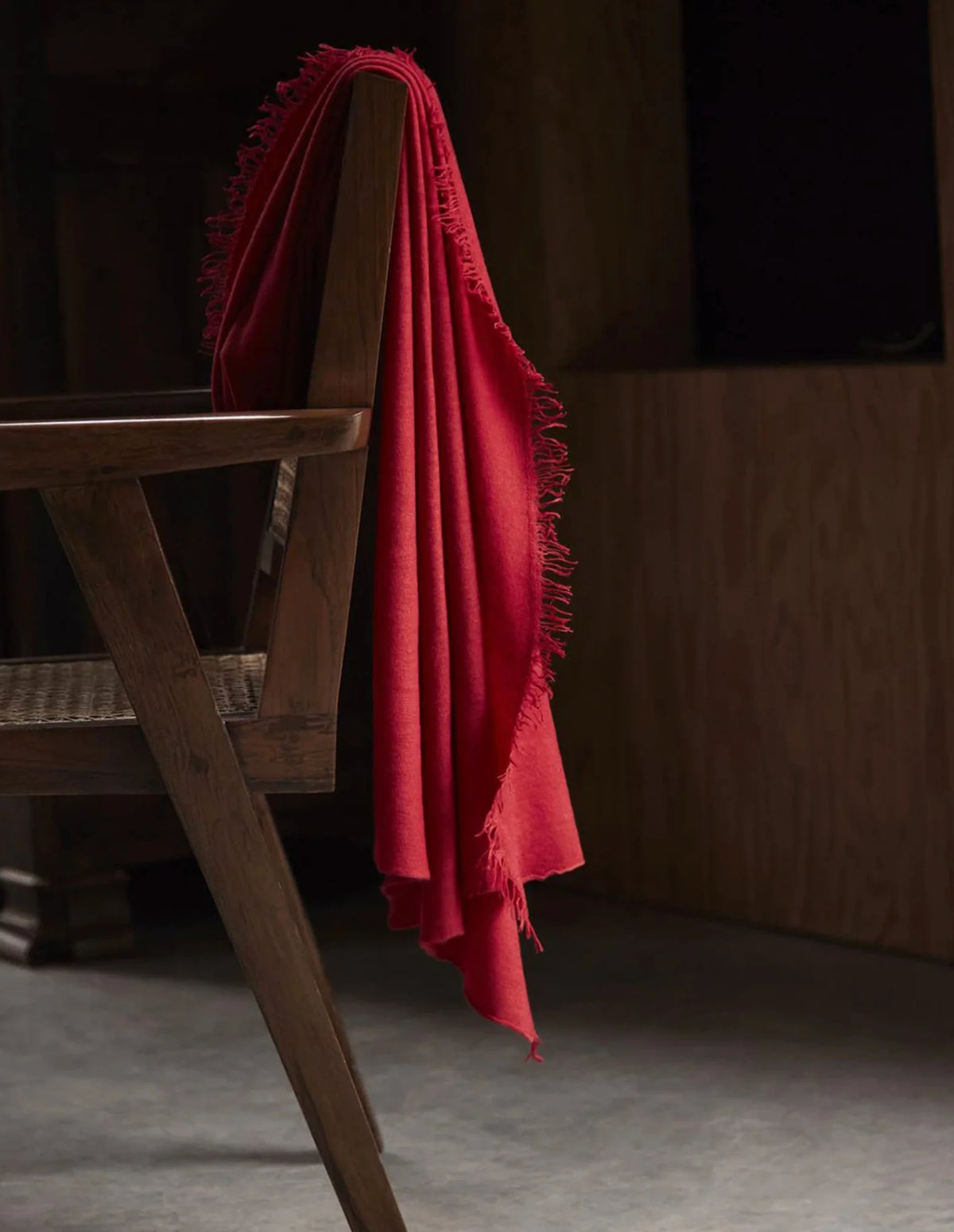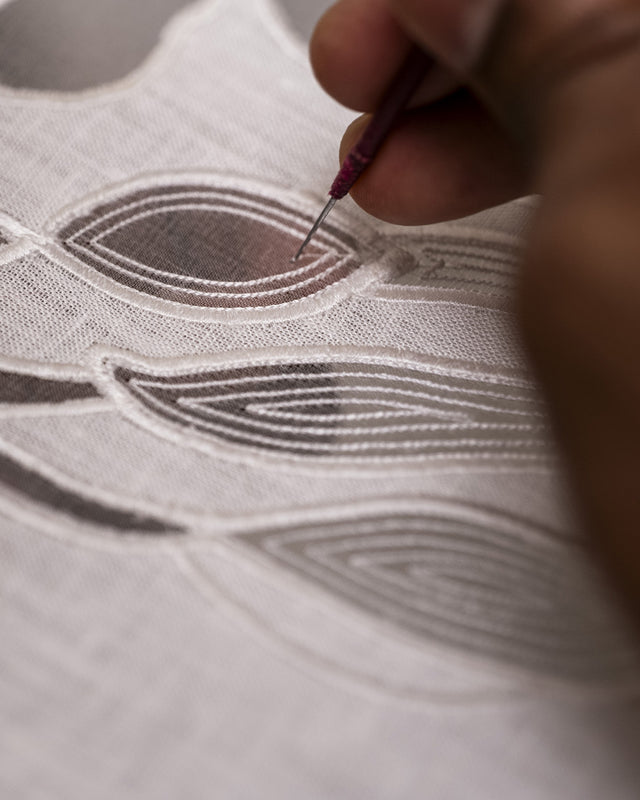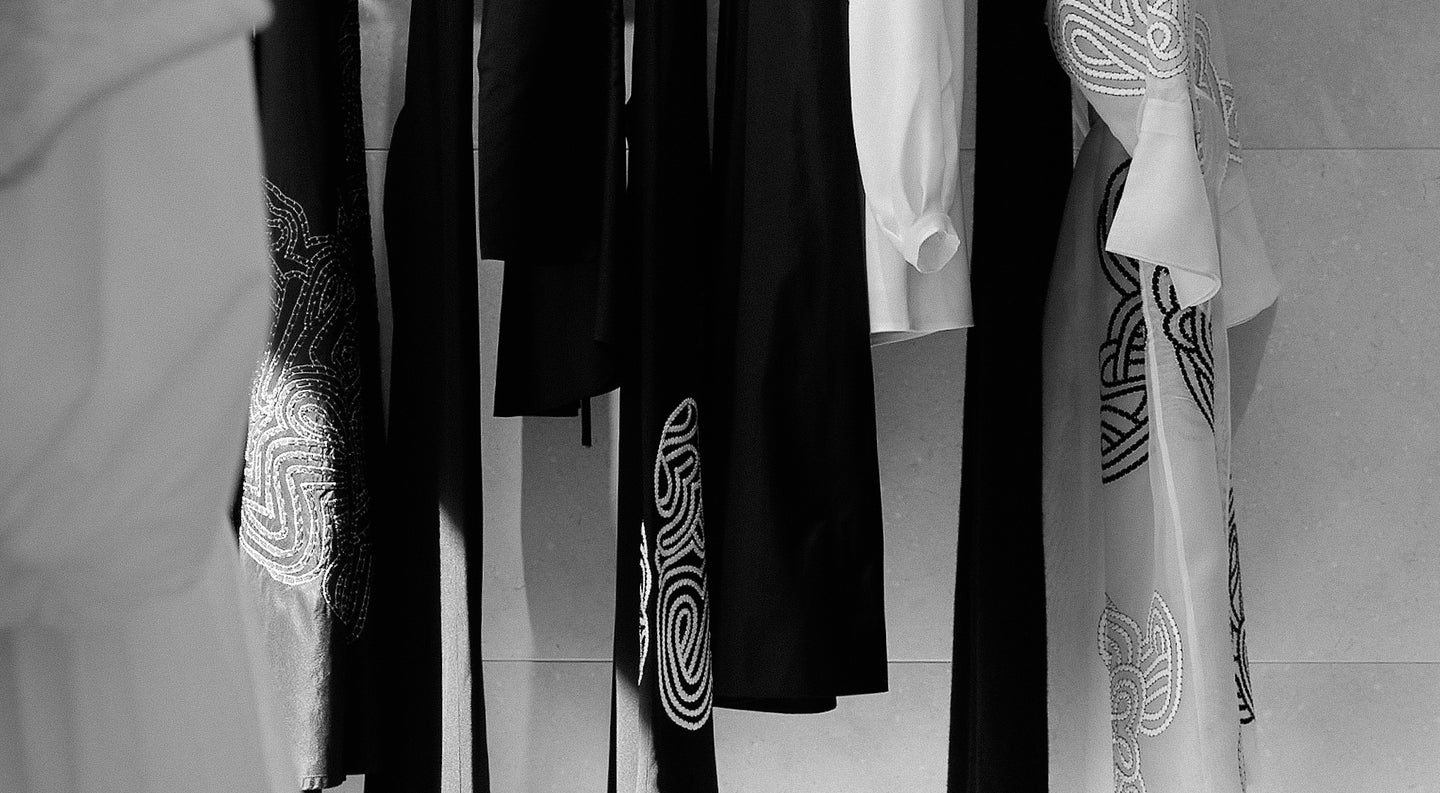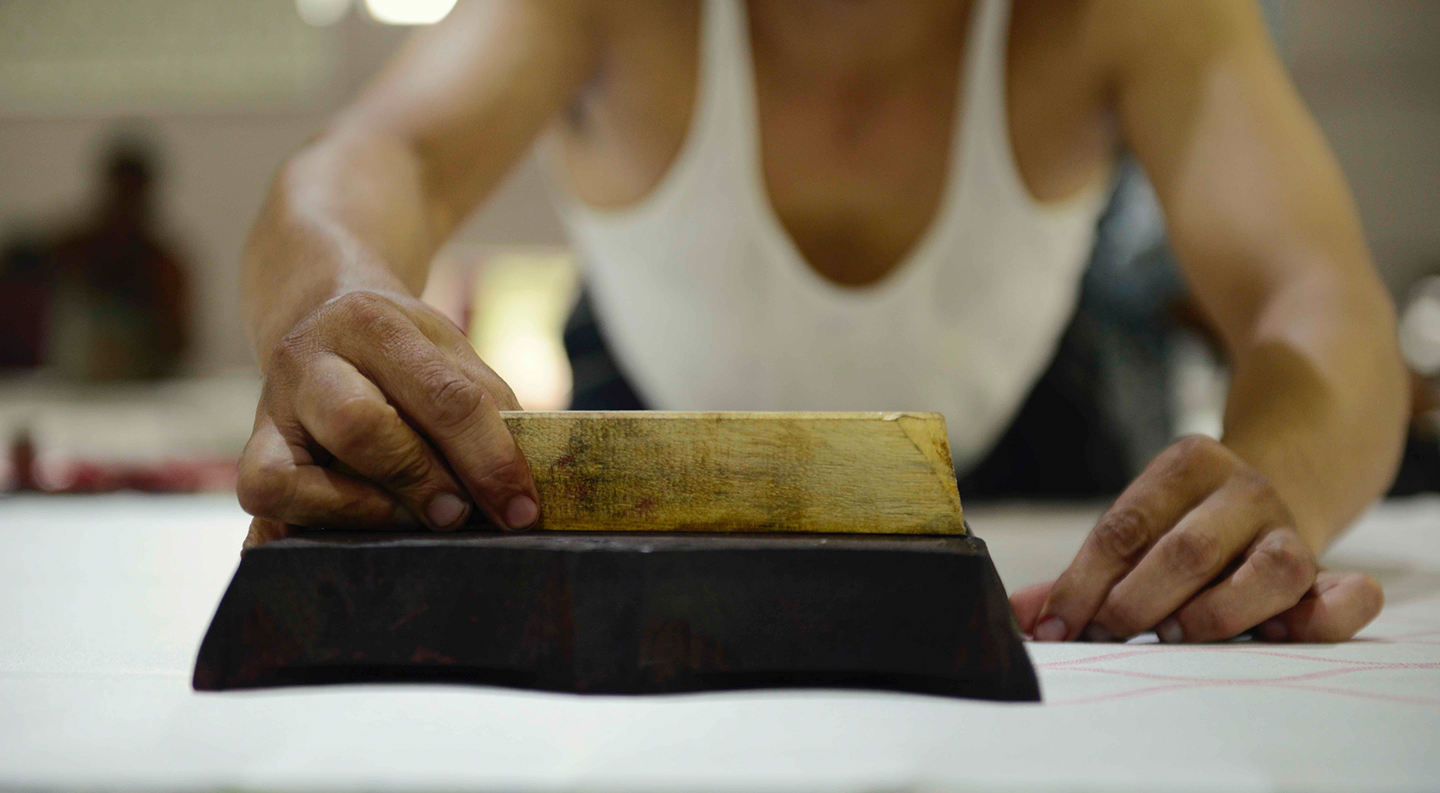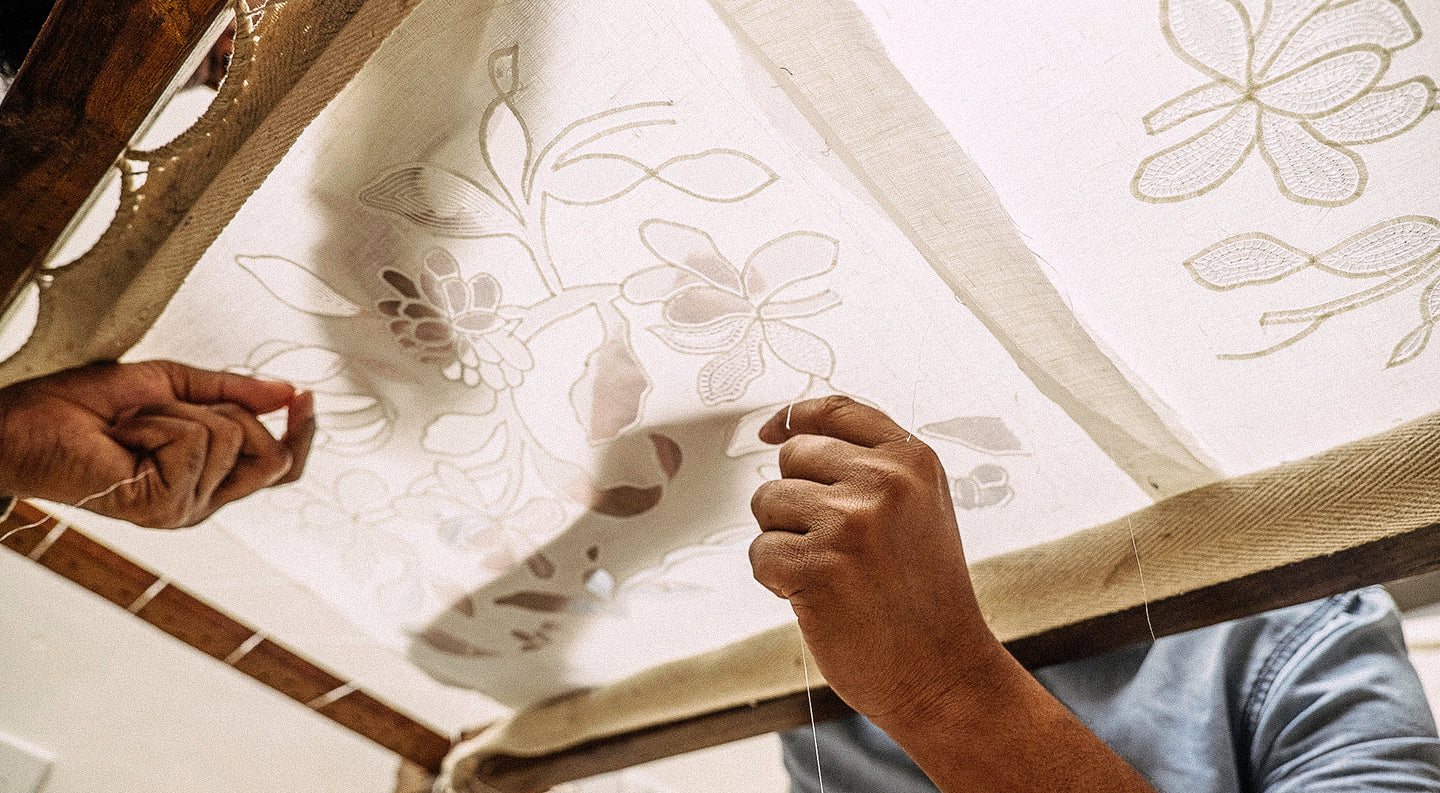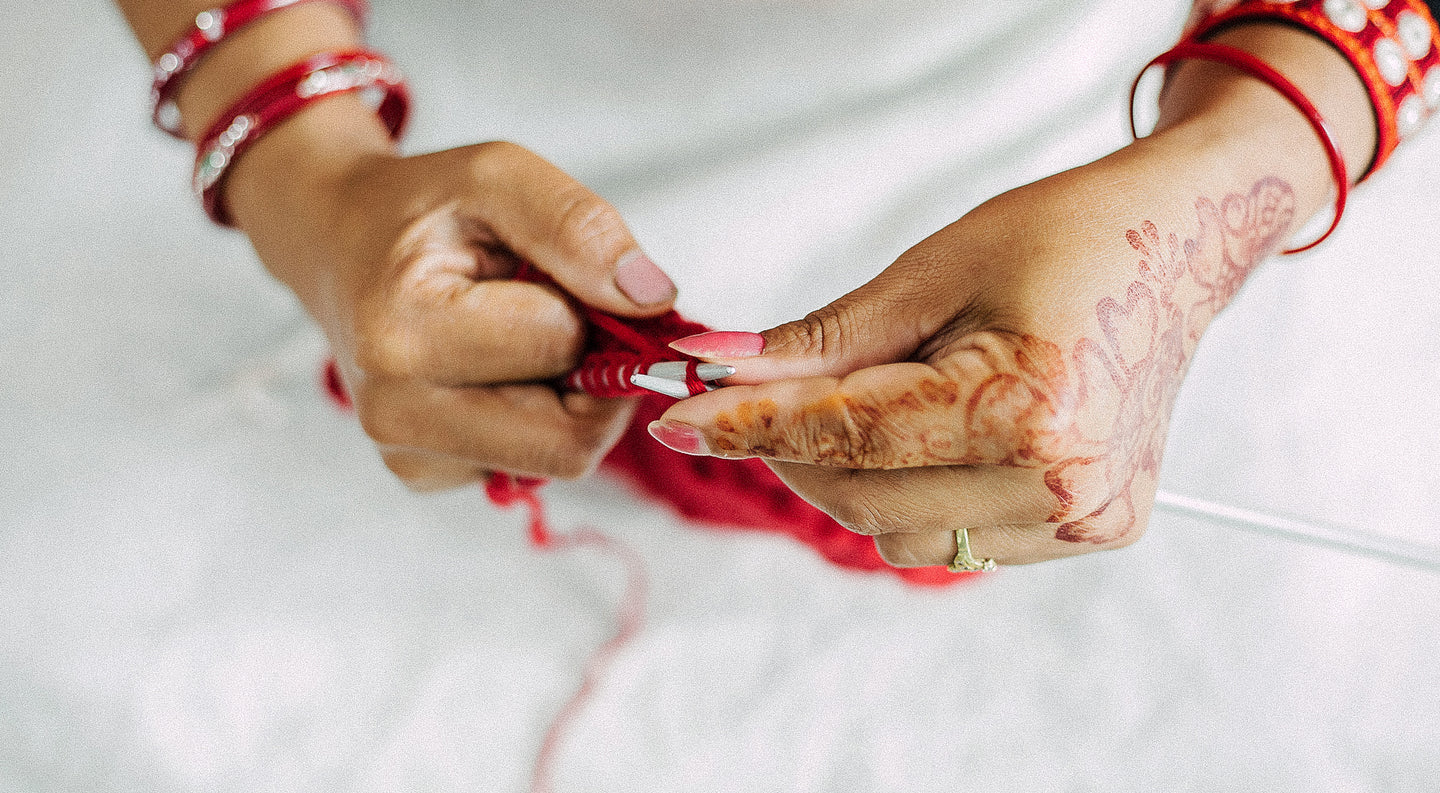What is Pashmina?
One of the finest natural materials on the planet, pure pashmina is both beautiful and unique in its look and feel. Behind its luxurious warmth is a story rich with history. The extraordinary skills required to source and weave pashmina have been passed down over centuries, from generation to generation. Few people know that Cashmere, or Pashmina, has its origins in the region of Cashmere (locally known as Kashmir) in the Himalayan Mountains. From the 16th to the 19th centuries, Kashmir was the only region in the world with the savoir-faire to produce Pashmina.
Where Pashmina Comes From
Many breeds of goats give cashmere yarn. Malra, Chigu, Lichen, Liaoning are some of these. The softest and best yarn comes from the remote Himalayan region of Changthang in Ladakh. Its source is the downy, winter undercoat of the Changthangi goat (capra hircus).
The local Changpa community rear the goats on the barren, mountain slopes that are too inhospitable for farming. Beautiful but hardy animals with distinctive twisted horns, the Pashmina goats graze under open skies and many travelogues will capture them dotting meadows and foothills, their mostly white coats contrasting with their rocky surroundings. This unique Himalayan biotope also supports other endangered species like snow leopards and black-necked cranes.
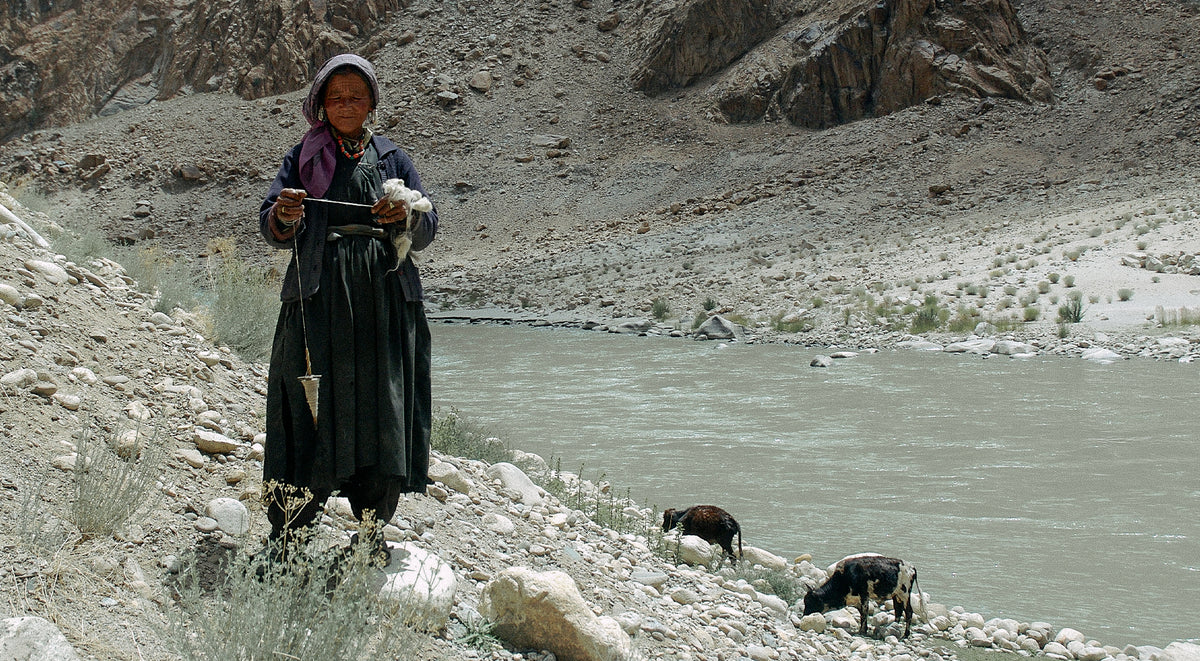
“The yarn is so difficult to obtain, and the process of making incredibly complex. That’s what makes authentic Pashmina a real luxury, to be handed down like heirlooms to subsequent generations.”
The History of Pashmina: Ancient Rhythms of Life
The Changpa herders have reared Changthangi goats, along with yak and sheep, for centuries. The Changpas are nomadic pastoralists who are said to have migrated from Tibet in the 8th century, crossing the great Himalayan Mountains to reach the Changthang region of India, which is a western extension of the Tibetan Plateau. The Changpas share a strong bond with their animals and their lives are governed by an ancient rhythm that aligns with the life-stages of the goats. For example, extreme cold is thought to be an essential element for triggering the growth of the Changthangi’s coats. In fact the Changpas have a saying that ‘as the days grow shorter, the wool of the Changthangi grows longer’. Unlike other nomadic tribes, in the region, the Changpas do not descend to warmer climes in the winter. Instead, the guardians of the Changthangi trace the migratory routes of their ancestors, grazing their herds in pastures at heights of more than 4,500 metres. The wrinkled, tanned faces of the tribesmen and women reflect the harsh lives they live.
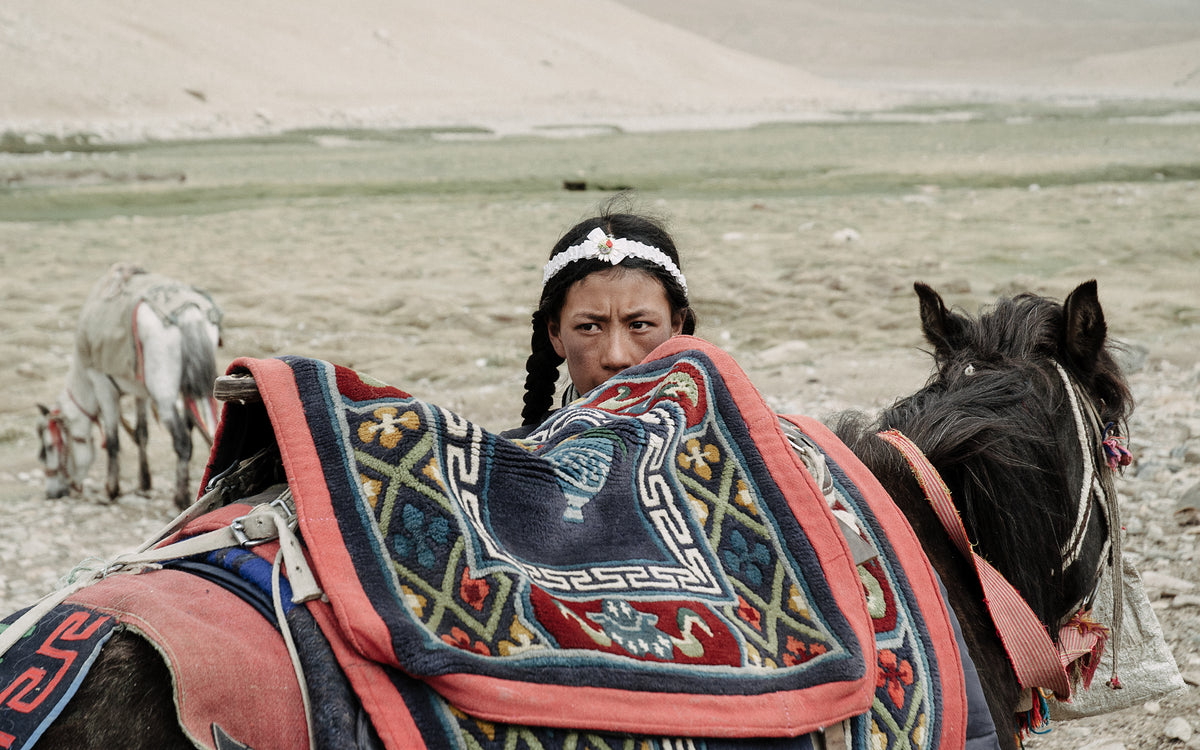
Men are typically dressed in heavy jackets with layer upon layer of sheepskin while women wear thick felt coats. Their distinctive silver jewellery and headwear is brightly adorned with mountain coral and turquoise Himalayan lapis.
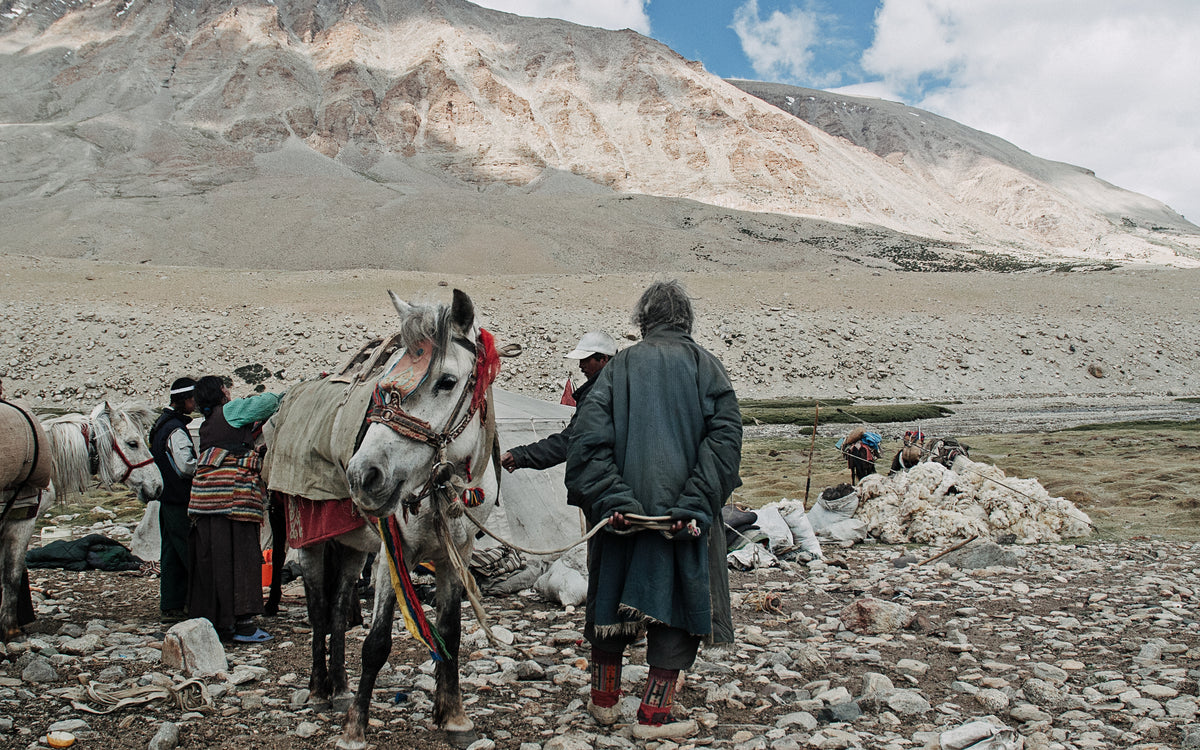
Each Changthangi goat harvests roughly 120 grams of raw fibre in a season. Of that, only 70 grams is fine enough to be spun into pashmina yarn. Goats shed their coats naturally in spring and the fibres are gathered not through shearing but through combing, a vastly more time-consuming process. The important thing to note is that the goats are not harmed in any way, as this is a natural cycle of moulting. The raw pashmina wool thus collected, is then transported from the high mountains to the valley of Kashmir, where it is sorted and hand processed.
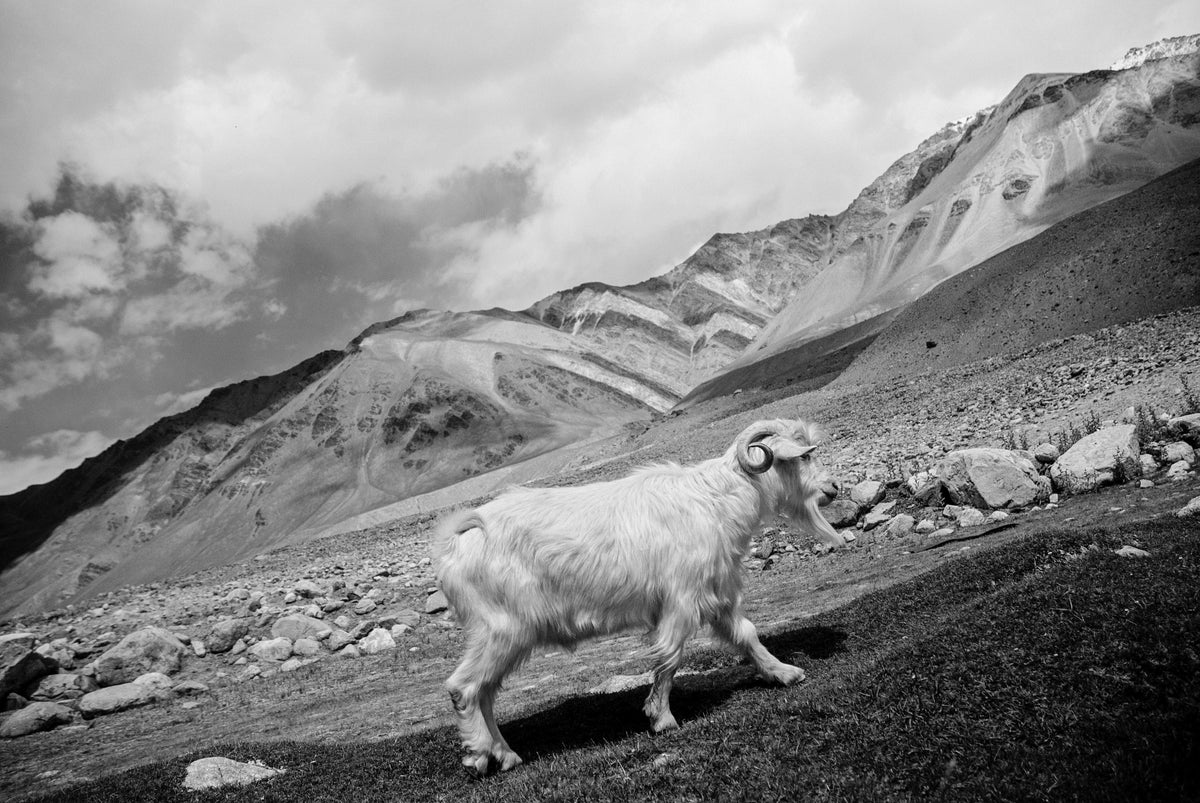
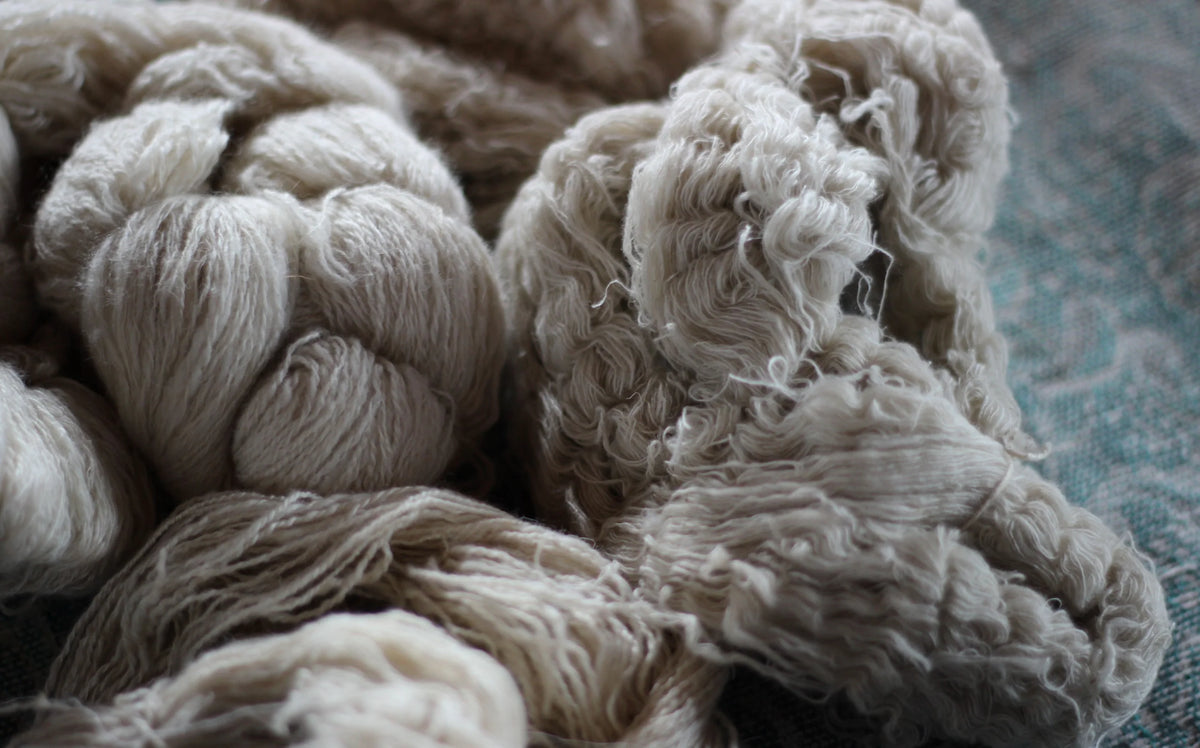
The Changthangi fibres are typically 12-15 microns in thickness, which is roughly one-sixth the thickness of a human hair. The threads are so delicate that they will break if woven in a machine. Pashmina is the art of spinning, weaving, dyeing, embroidery and finishing of the fabric created using the yarn of the Changthangi goat. It takes a month to create a length of plain pashmina. When the fabric is embroidered it can take up to 5 years to create an intricately worked shawl.
Ethically-Sourced Pure Pashmina at Varana
Varana sources the softest, most beautiful authentic Pashmina exquisitely hand-woven in the Kashmir valley. The yarn is so difficult to obtain, and the process of making Pashmina products is incredibly complex. That’s what makes these Pashmina stoles and shawls a real luxury especially when compared to the so called mass-produced luxury that is ubiquitous today. Pure Pashmina products will last a lifetime and should be passed on like heirlooms to subsequent generations.
At Varana we recognise that culture and knowledge are the foundation of true luxury. Every Varana product is centuries of expert knowledge and craftsmanship.
